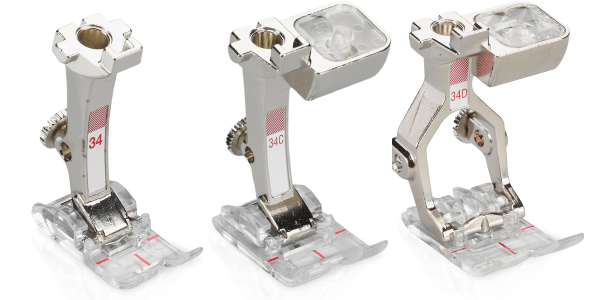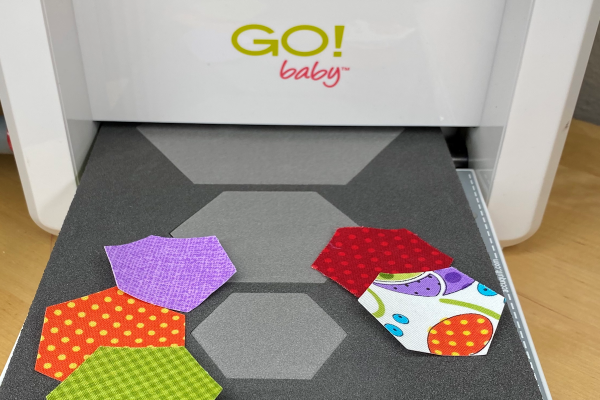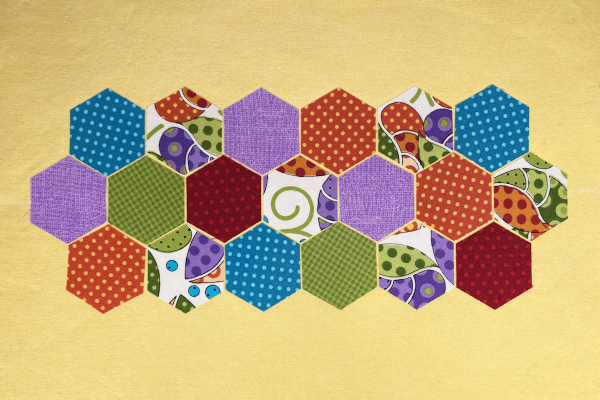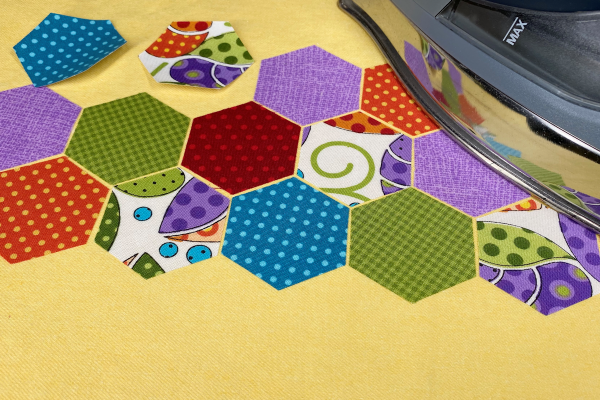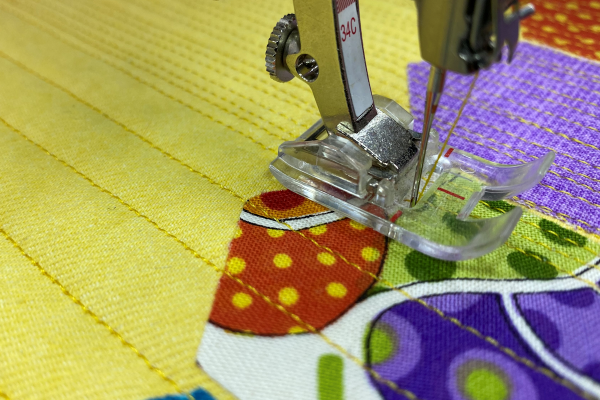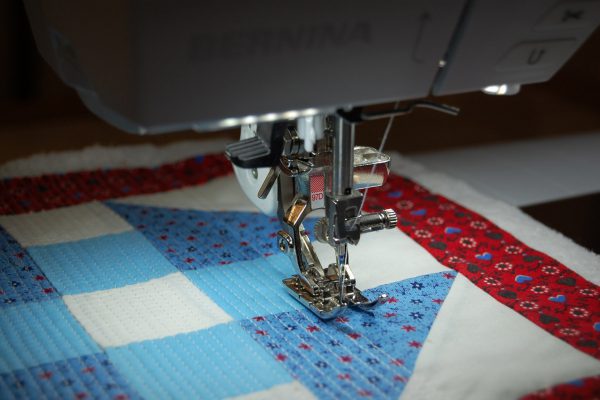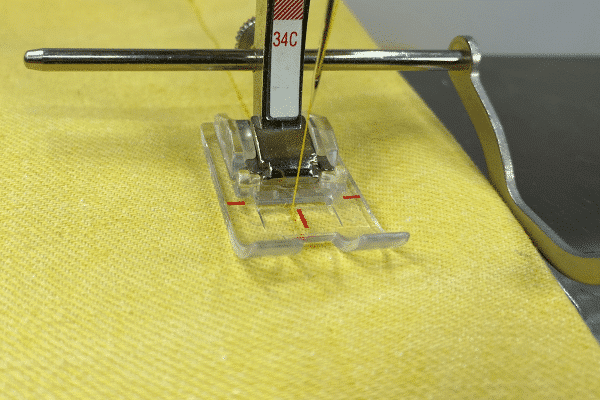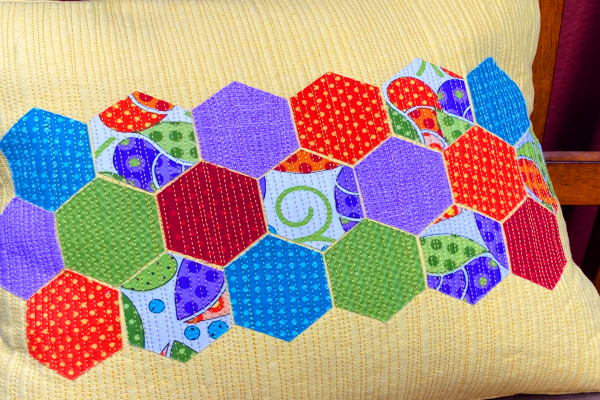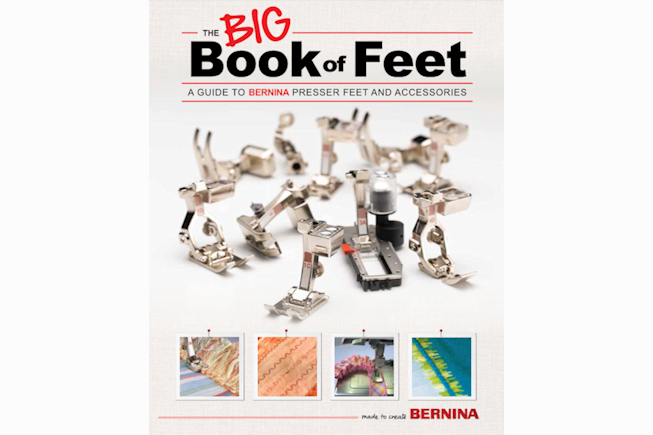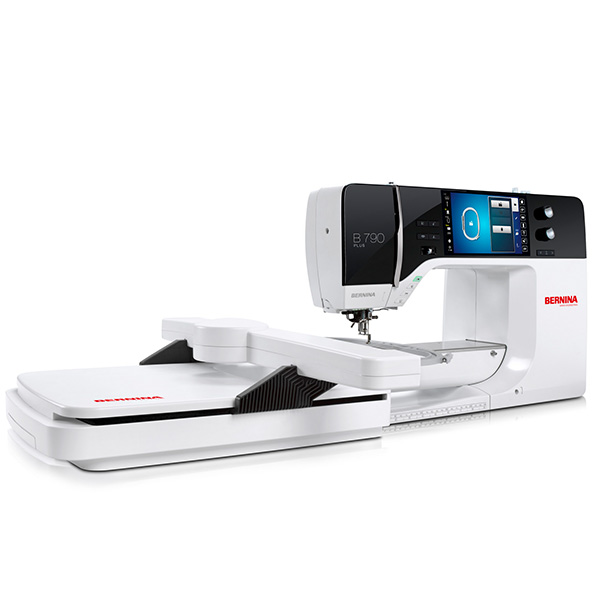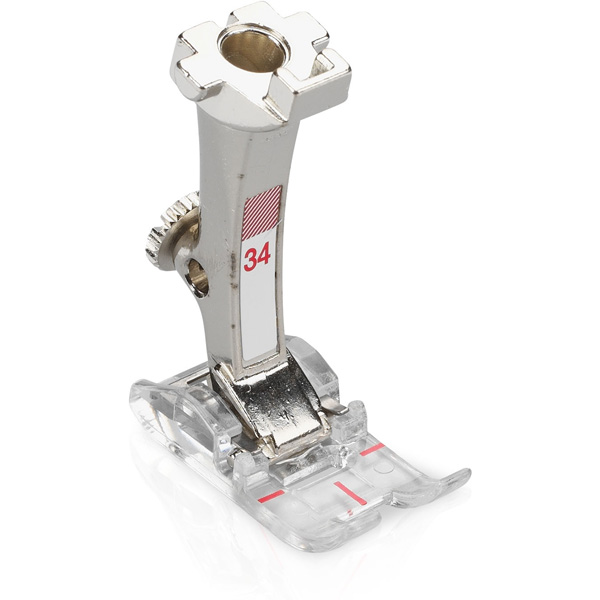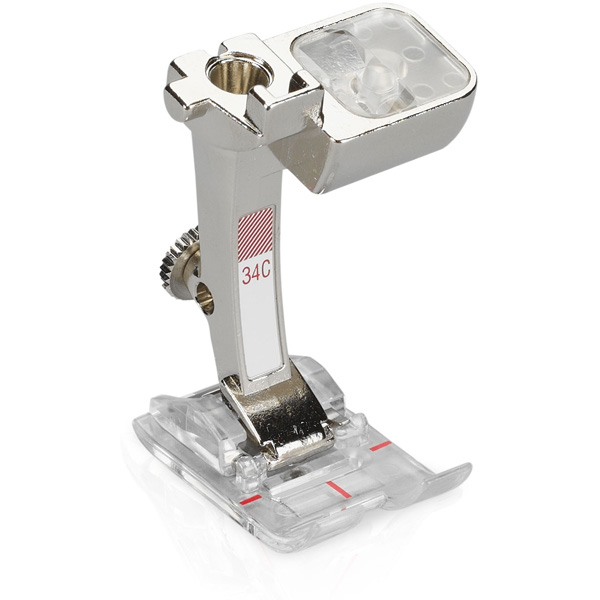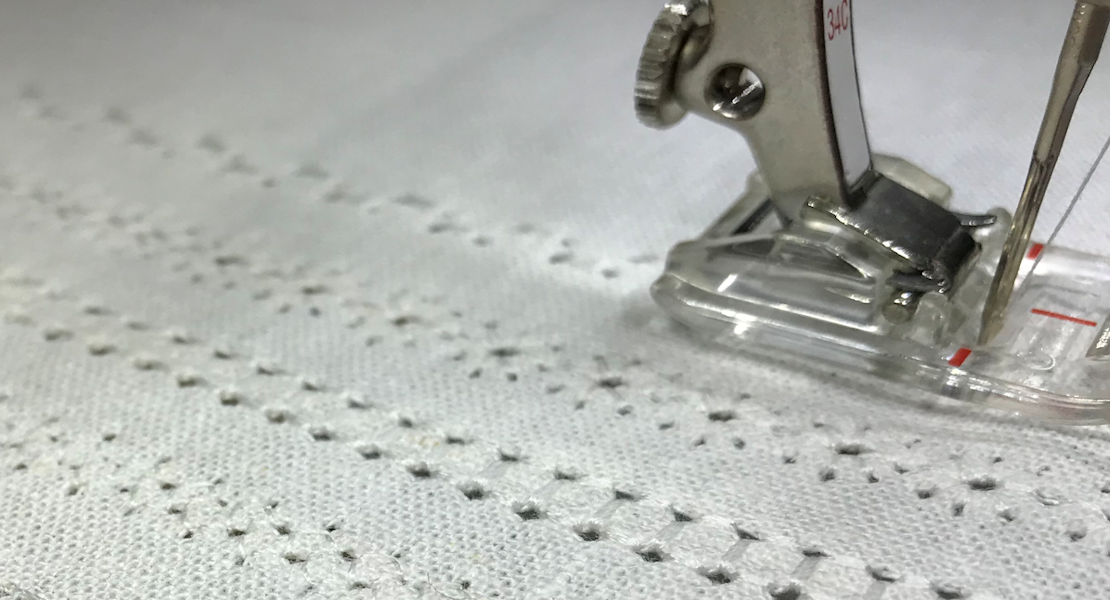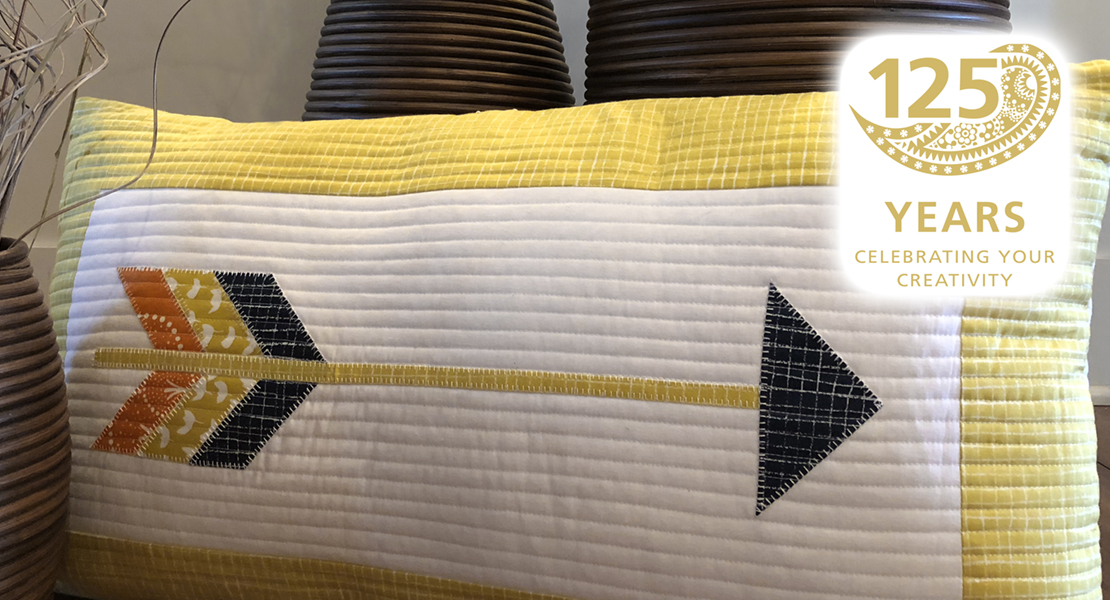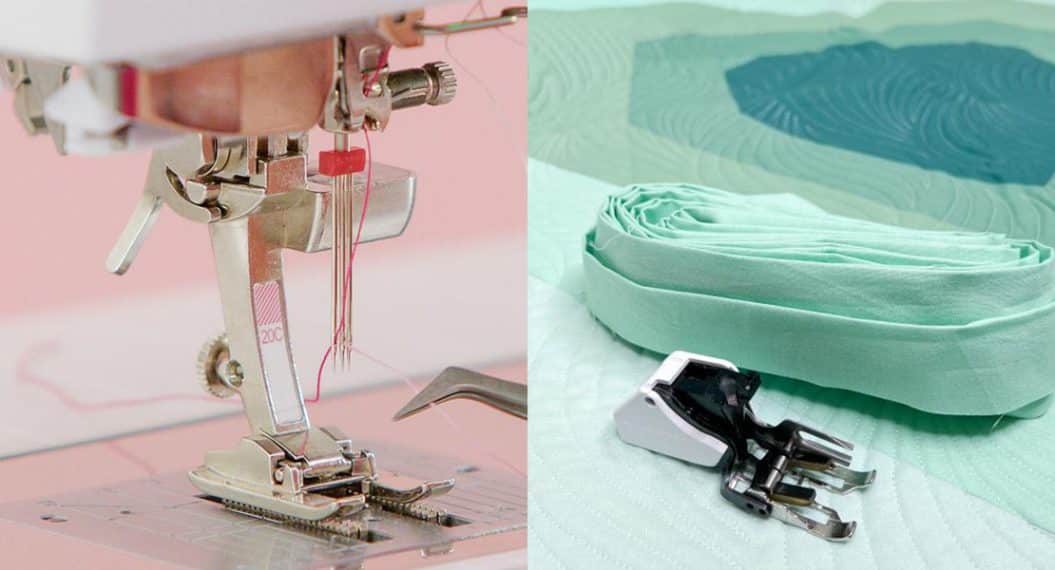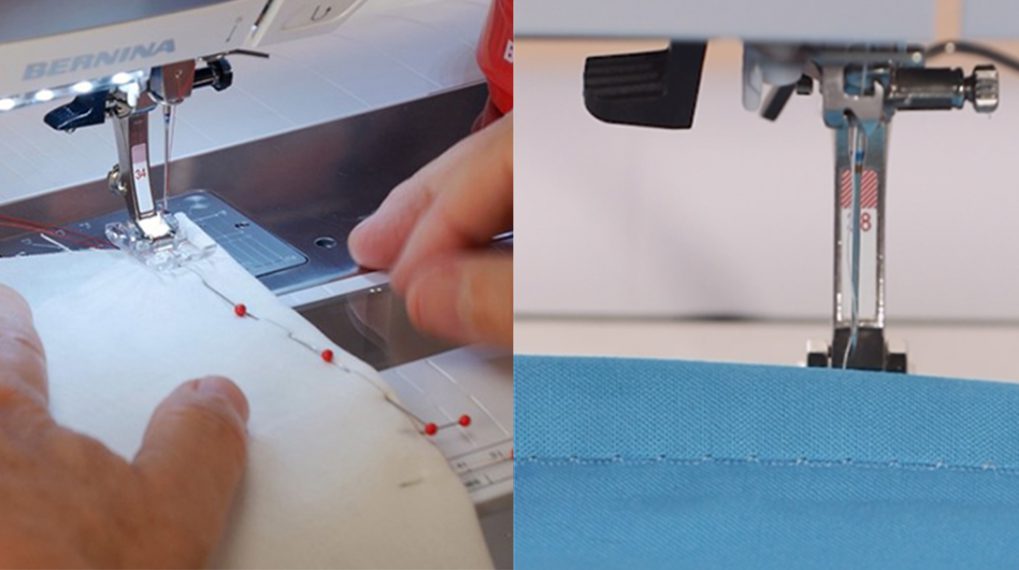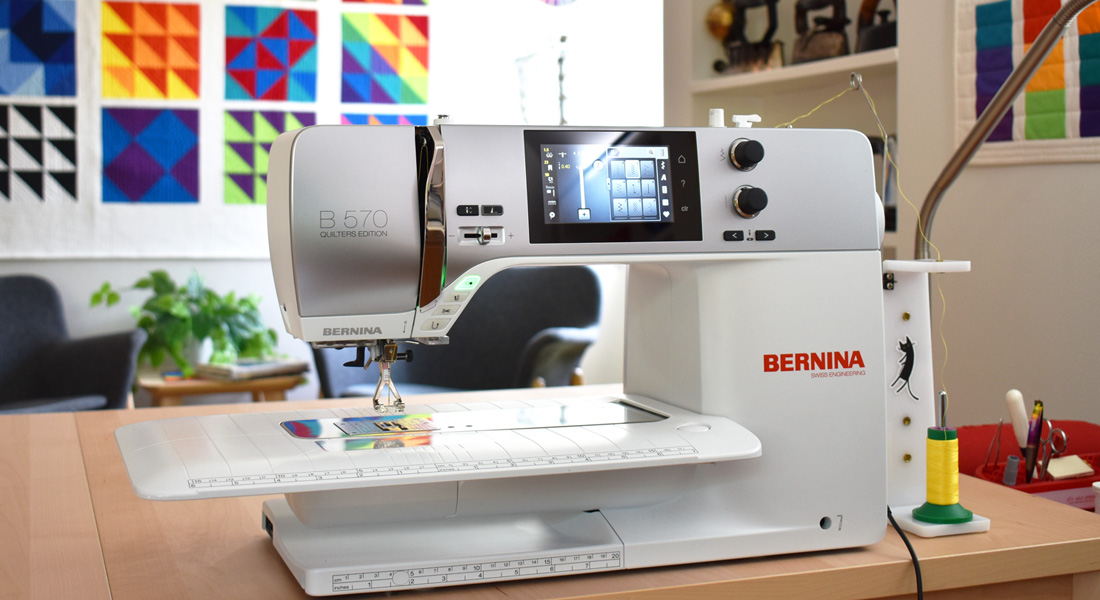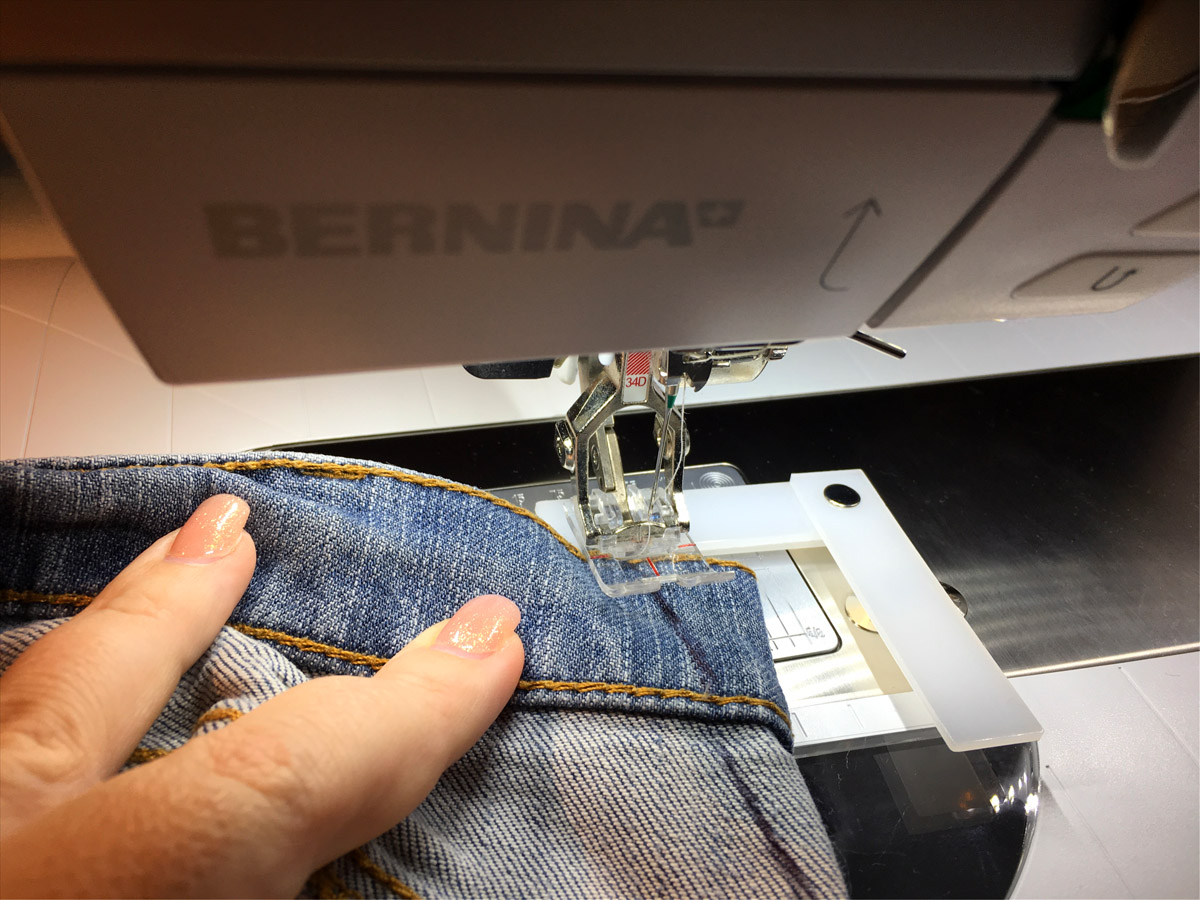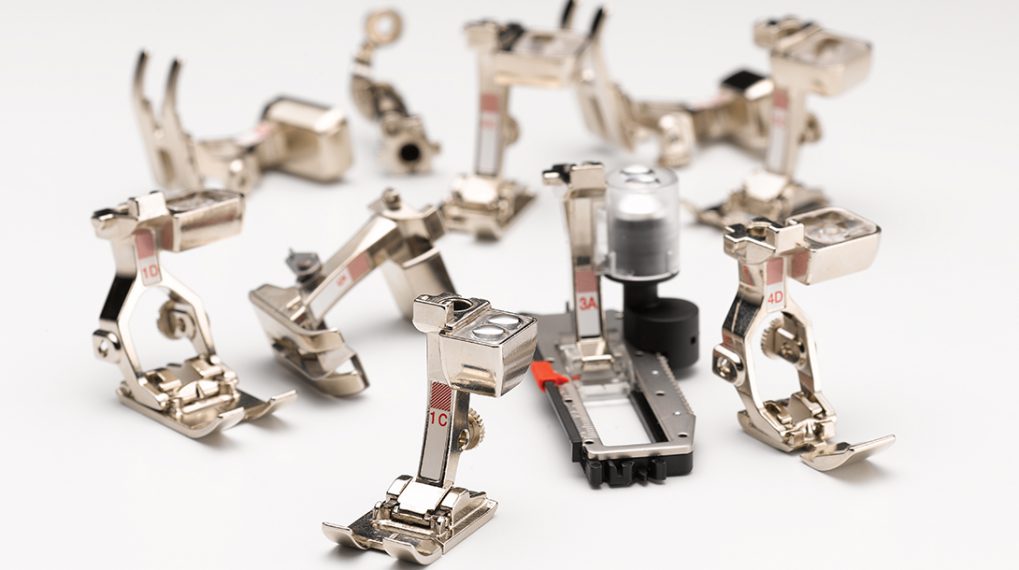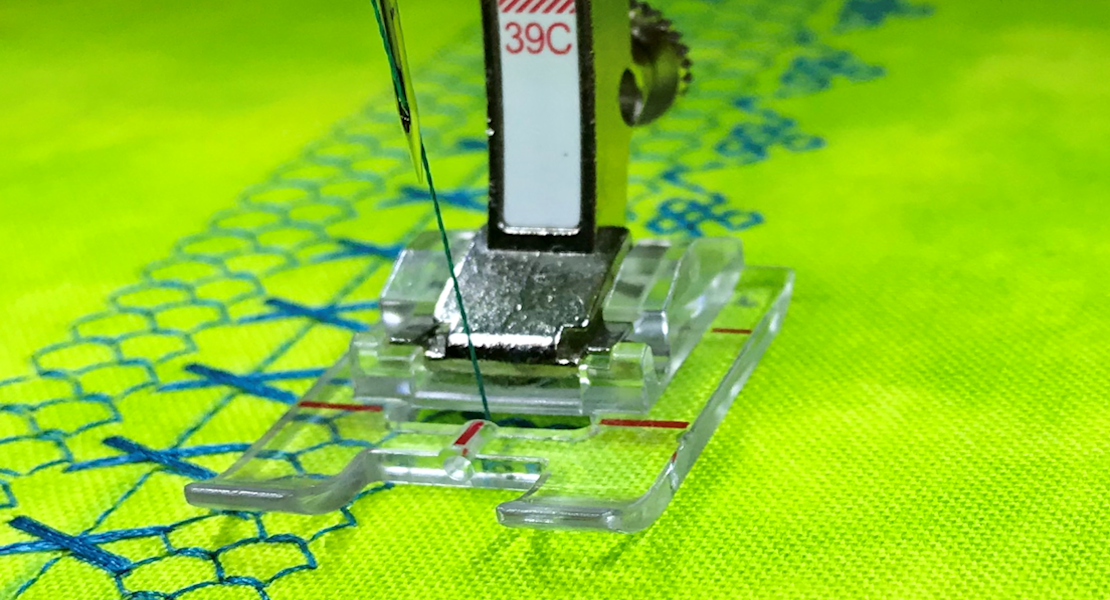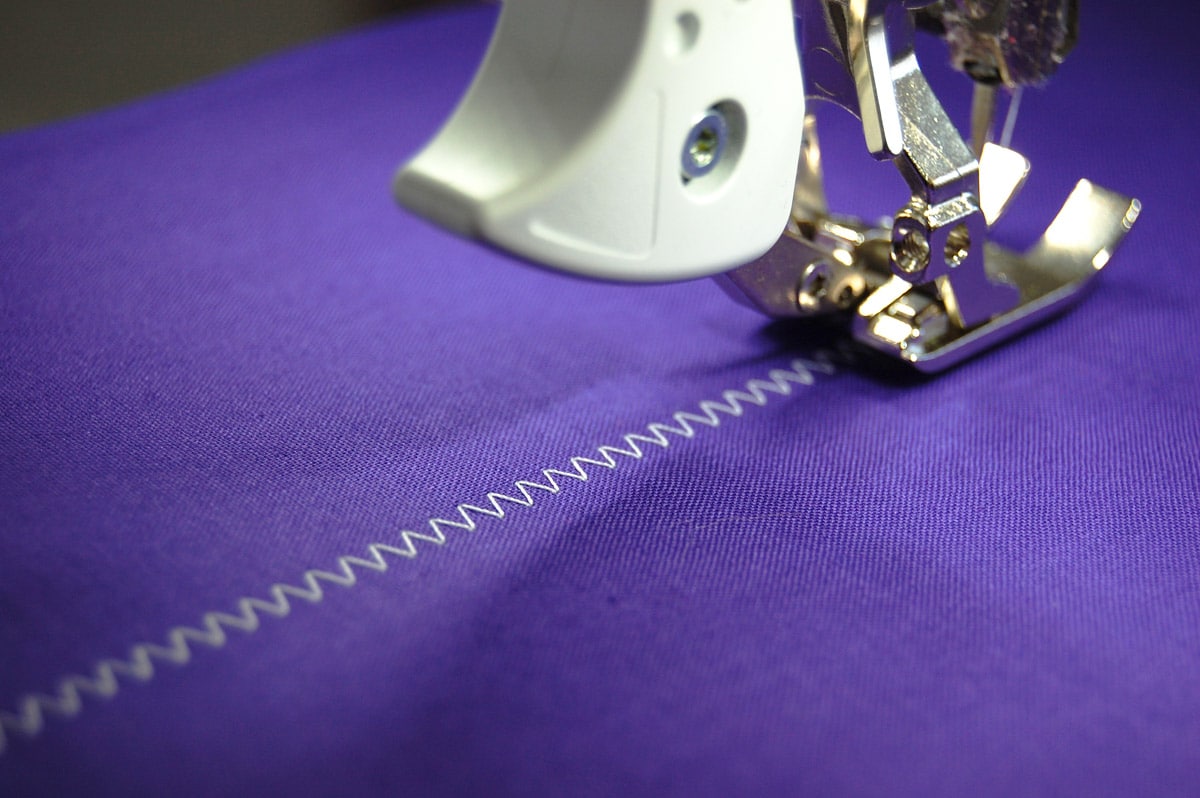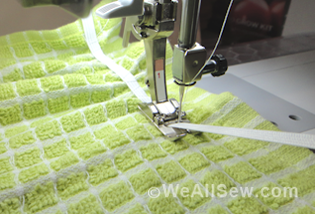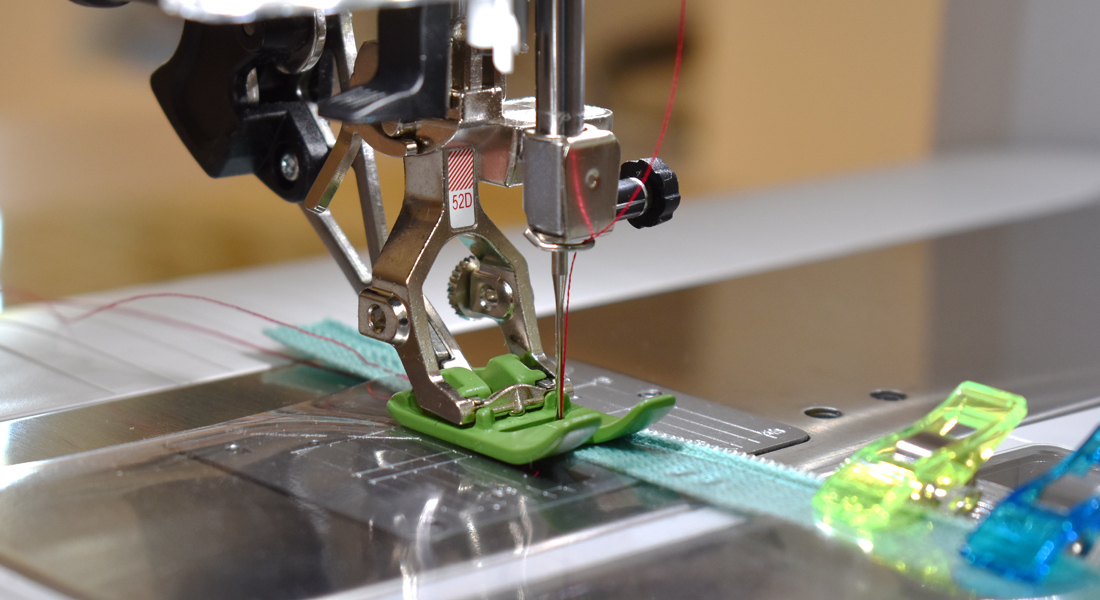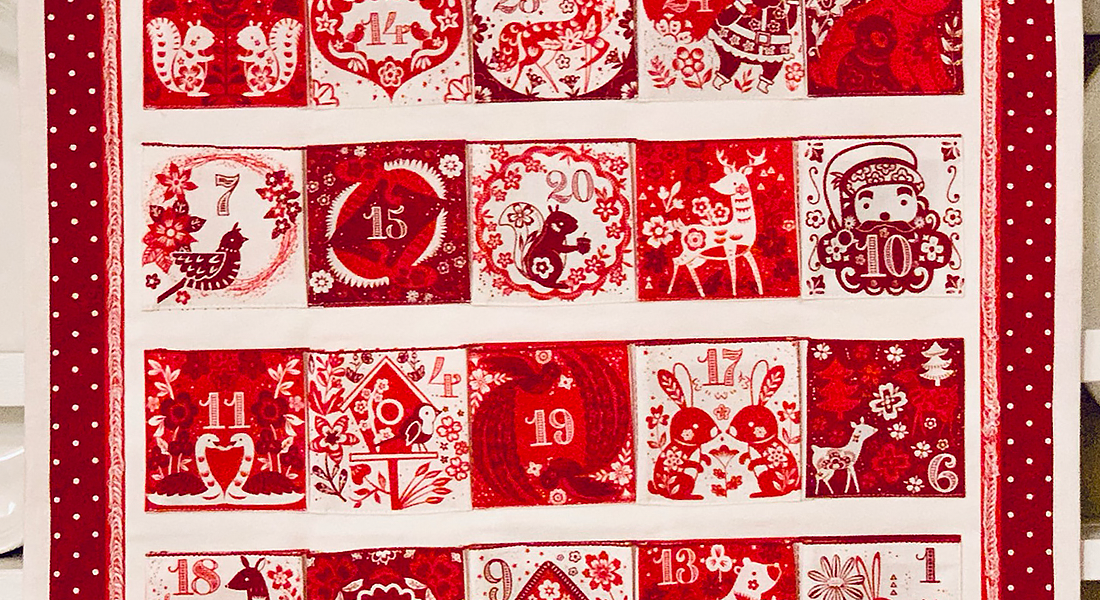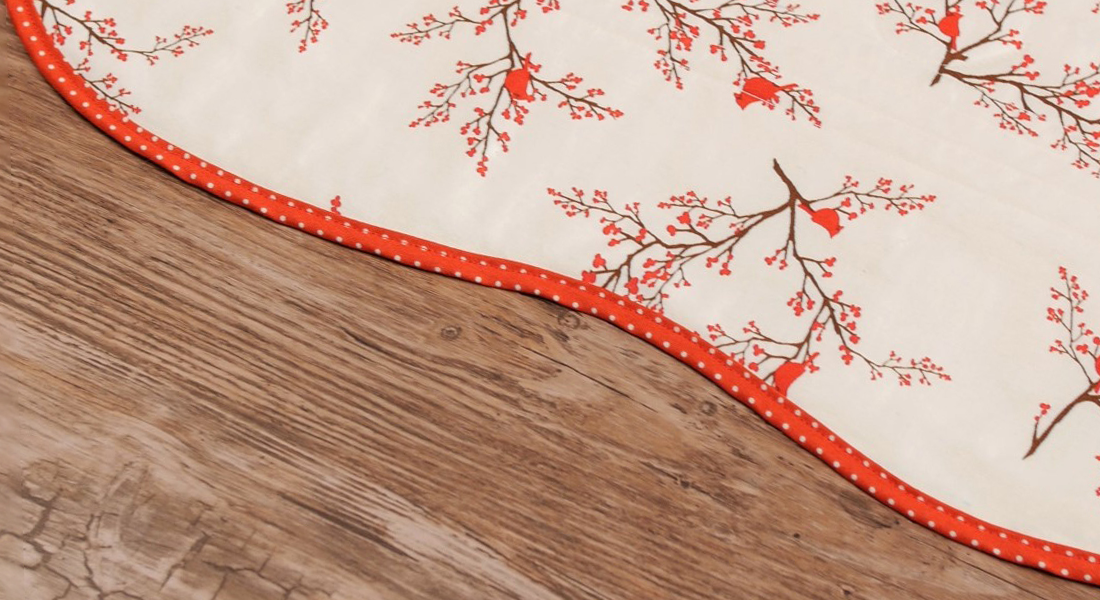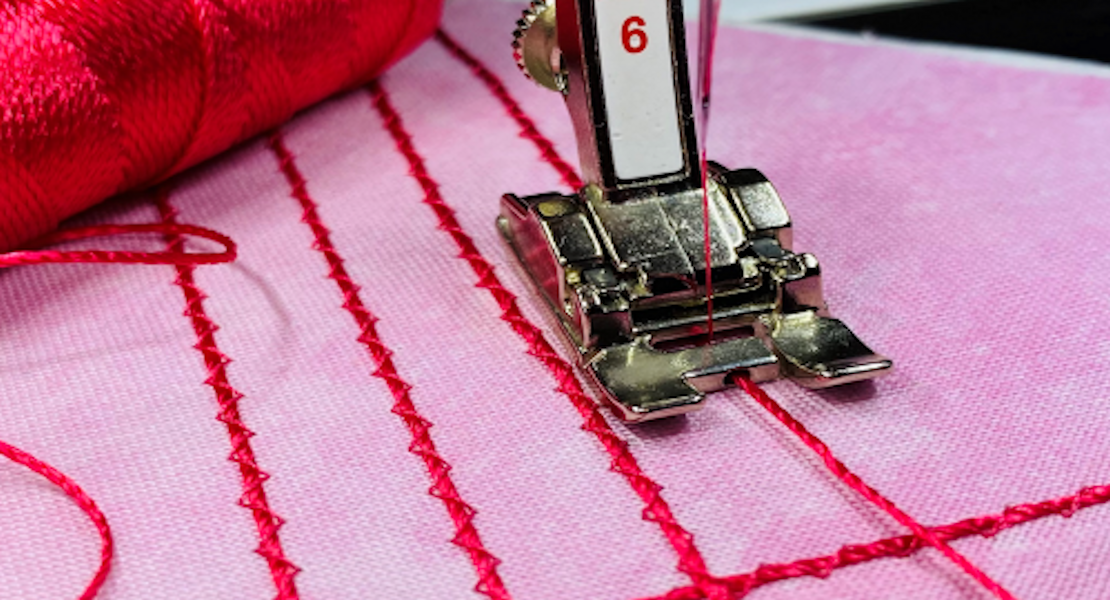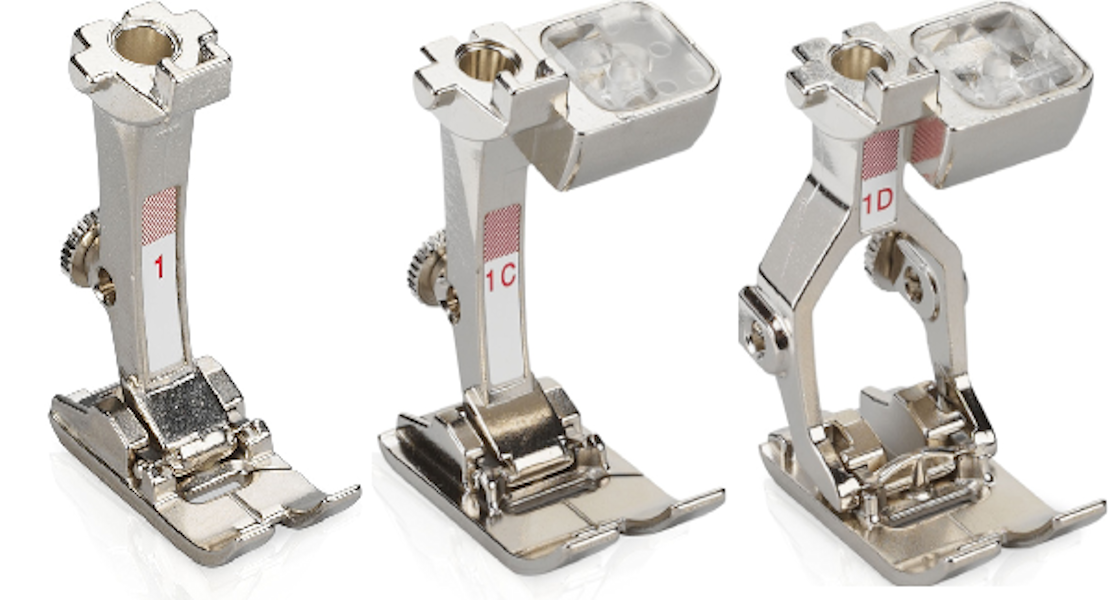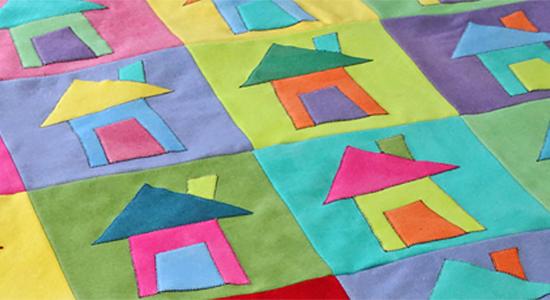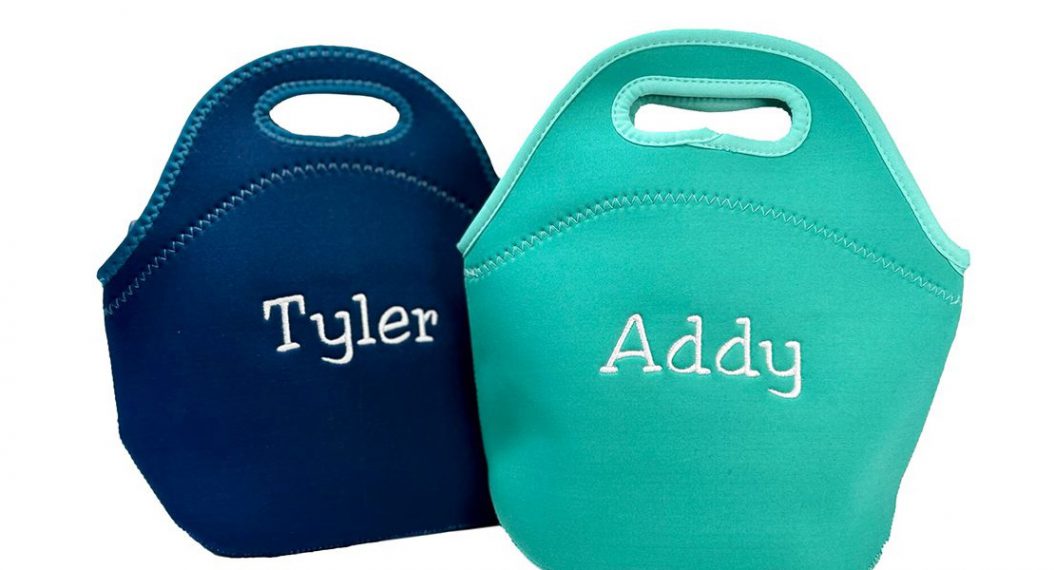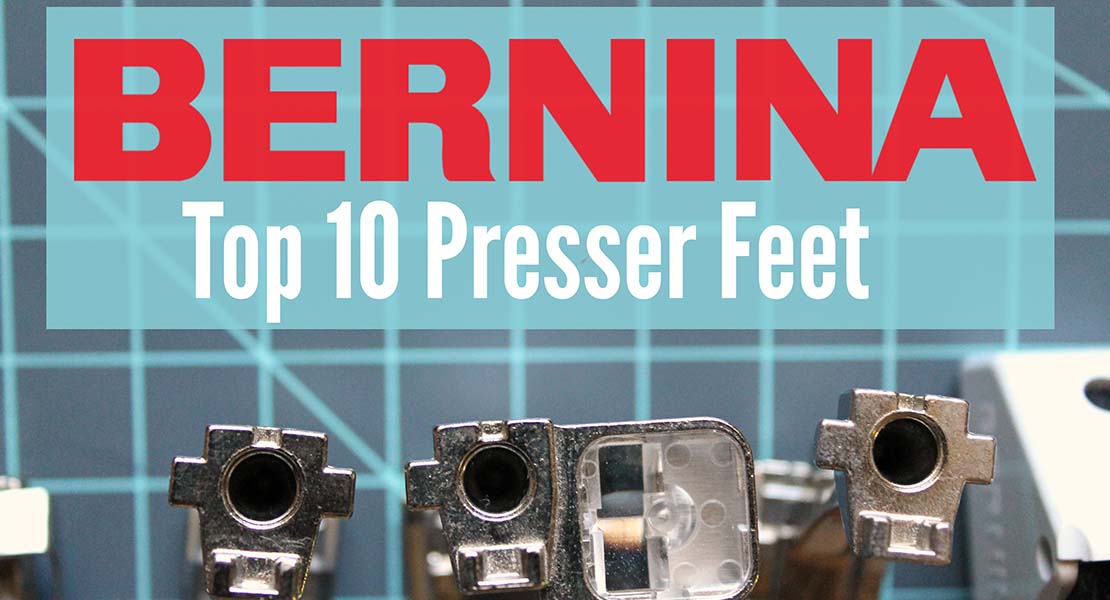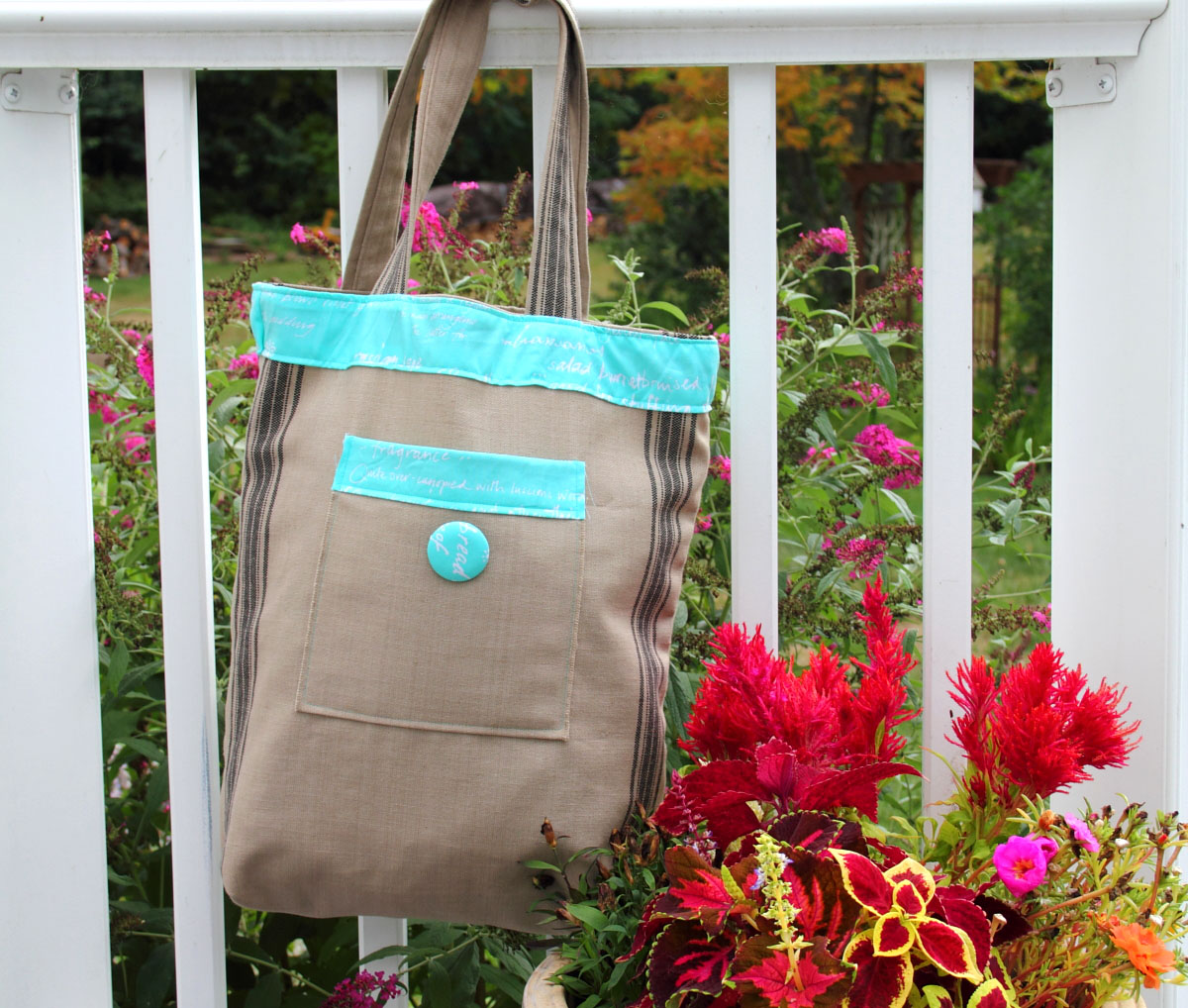Hexagon Appliqué with Clear Foot #34/34C/34D
Appliqué is a great way to embellish fabric for almost any type of project. From whimsical to rustic to elegant, appliqué designs can add any style to plain fabric. Appliqué is not a hard technique to stitch but it can be a little fussy, trying to follow the corners and curves to cover the edges of intricate shapes. Here’s a fun, modern Hexie design that you can appliqué to fabric without following curves and corners!
I made the pillow shown on my BERNINA 790 PLUS but it can be made on any BERNINA machine. The presser foot I used for this technique is Clear Foot #34/34C/34D. It’s a great all-purpose foot that can be used for a large number of general sewing techniques. The clear sole makes it easy to see the fabric as I sew, and the red markings are there to keep me on track.
Materials to Make a Hexagon Appliqué Pillow
- Firm fabric for pillow front: 16” x 12” (I used a yellow, medium weight denim)
- Same fabric for pillow back: 2 pieces, 16” x 10”
- Polyester embroidery thread in a color that matches the pillow
- Low-loft batting, 16” x 12”
- Nineteen 3” squares of assorted print fabrics for the hexagons
- Paper-backed fusible web
- Rectangular pillow form, 14” x 10”
- Fabric marker
Hexagon Appliqué
Fuse paper-backed fusible web to the wrong side of the hexagon fabrics. Cut out 19 hexagons. I used Accuquilt GO! baby to cut mine, so it was fast, and they are all exactly alike. I highly recommend this method but you can Hexagon Applique Pattern.
Using a fabric maker, draw a horizontal line across the center of the pillow front. Make a short vertical mark at the center of the line to indicate the center of the pillow front. Place one hexagon at the marked center of the pillow front. Place three hexagons on each side of the center one, centering them on the horizontal line and leaving about 1/16″ between them. Place a line of six hexagons above and below the center line.
Once you have the hexagons arranged the way you want, remove the paper backing from each one and fuse them in place. Tip: Take a photo of the arrangement before you start fusing them in place. That way, if they get shuffled around, you know where you wanted each one to be.
Matchstick Quilting
Instead of stitching the edges of the appliqué shapes, I used matchstick quilting, vertical lines placed about ⅛” apart across the entire pillow front. This is a simple way to quilt the pillow front and secure the appliqué shapes at the same time. If I’m quilting a large project, I use a walking foot but for this project I used an all-purpose foot. It worked because the size of this project is small and once it is quilted, the edges are trimmed so even if it shifts slightly, it will all work out in the end.
Place the batting behind the fabric for the front cover. I start by stitching vertical lines about 1″ apart across the fabric to hold the layers together. Then I stitch lines about 1/8″ apart it in fill it in, covering the entire pillow front. The clear sole of Foot #34 lets me see the lines as I stitch.
I am not trying to be exact in my spacing or even sew perfectly straight. I think when the lines look more randomly stitched, it adds character to your project. As they say, done is better than perfect!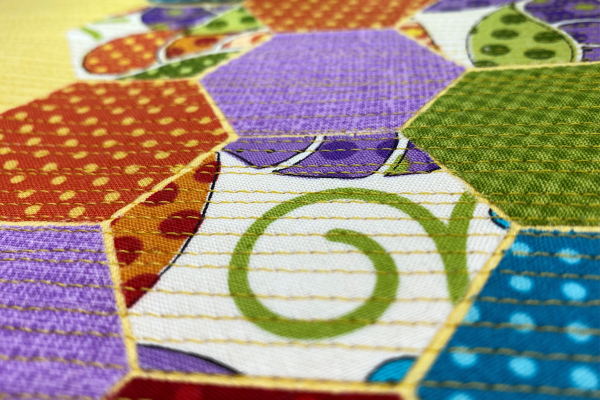
For more information on matchstick quilting, click here to see this WeAllSew post.
Pillow Construction
Hem each back piece by folding one 16” side 1” to the wrong side, twice for a double hem. Use the seam guide that can be attached to the back of the presser foot to make it easy to stitch a consistent distance from the folded edge of the pillow. Stitch to secure the hem. Overlap the two hemmed edges by 3” and pin together.
Trim the quilted pillow front to 15” x 11”. Position the trimmed front on top of the pinned back and trim the back to match the front; adjust the overlap if needed. Place the pillow front and back right sides together and trim the corners to be slightly rounded. Stitch around all four sides of the pillow, using a ¼” seam allowance. Trim the seam allowances at the rounded corners. Turn the pillow to the right side and insert the pillow form.
For more information on BERNINA presser feet and accessories, see The Big Book of Feet at your local BERNINA store.
